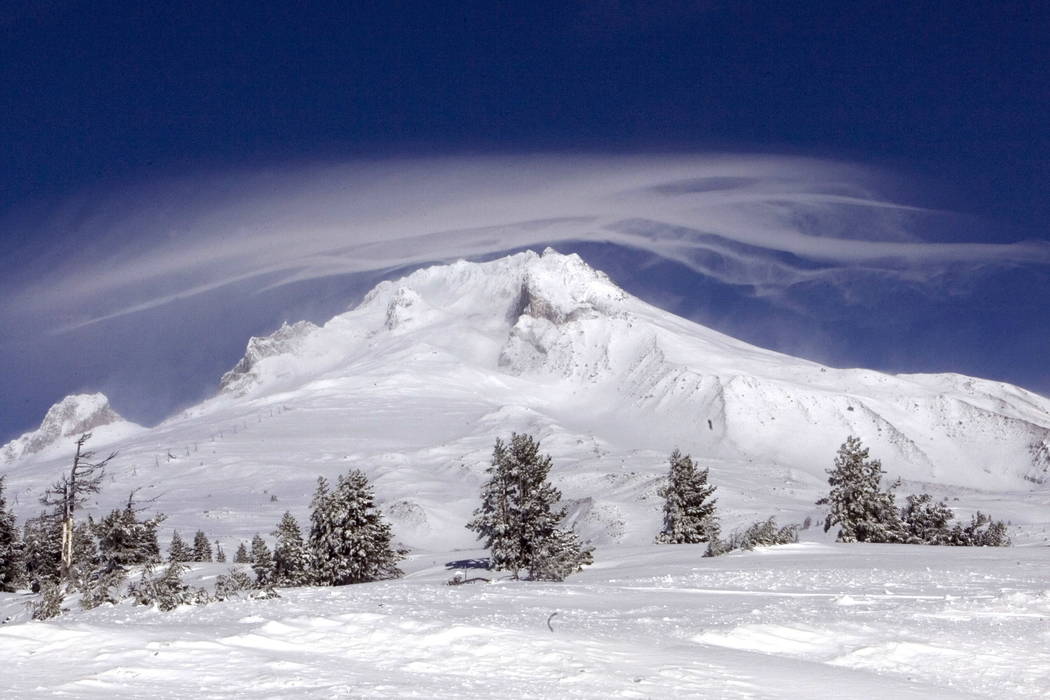COMMENTARY: Here’s the problem with monitoring Mount Hood

The Review-Journal’s Wednesday editorial (“Protecting nature at the expense of human beings”) ignored most of the facts and background regarding the Forest Service’s decision to authorize permanent seismic monitoring stations in designated wilderness on Mount Hood in Oregon. Readers deserve a more complete understanding of the issues involved.
Wilderness Watch recently objected to the Forest Service’s decision to allow permanent seismic monitoring stations in the Mount Hood wilderness, complete with concrete footings and serviced by helicopters. This decision violates the 1964 Wilderness Act and degrades the Mount Hood wilderness. It’s not for national forest managers to decide which laws to violate or ignore.
Wilderness is a uniquely American idea and ideal. We are incredibly lucky we still have some of it left. The framers of the Wilderness Act constantly reminded us that we would have to practice humility and restraint to keep it around. That means that all of us — visitors, managers and other users — have to be willing to do things differently in order to preserve wilderness for present and future generations. It’s not always easy, but it’s necessary. That’s why the recent proposal to use helicopters and place permanent instrument installations raises concerns.
The 1964 Wilderness Act includes safeguards against permanent installations and structures in designated wilderness, even if done for scientific purposes. The law also prevents the landing of helicopters or use of any other motorized equipment to service the stations.
Wilderness Watch supports scientific research in wilderness areas. It is one of the primary reasons for wilderness designation and one of its greatest values. Like other activities in wilderness, however, scientific research has to be done in a way that protects the other values of wilderness and doesn’t include those things that the law prohibits, such as the use of helicopters for access and the installation of permanent structures. Like all other wilderness visitors, researchers should walk or use packstock to access wilderness and carry in their supplies.
Our organization also supports public safety and a better understanding of seismic activity. Warning signs of an impending eruption, which are usually detectable outside of wilderness, tend to be normal for Cascade Range volcanoes. Such warning signs generally precede any eruption by a significant length of time. Increasingly, researchers are also able to monitor seismic activity remotely, even from satellites. But if monitoring must be done inside designated wilderness, it must comply with the Wilderness Act and not degrade that specific wilderness.
Unfortunately, the Forest Service did not analyze any alternatives beyond the proposal submitted by the U.S. Geological Survey, an agency that may be good at what it does but has no wilderness expertise. For example, don’t the current monitoring stations on Mount Hood just outside of protected wilderness already provide monitoring data? Could new monitoring stations close to but outside wilderness boundaries provide useful data? What is the potential for using satellites for monitoring volcanic activity at Mount Hood? How much monitoring is enough? Should we degrade the Mount Hood wilderness that Congress itself has protected in order to monitor for an eruption that may not occur for a thousand years or more?
Unfortunately for the Mount Hood wilderness, the Forest Service didn’t even consider this sort of analysis. The Forest Service simply rubber-stamped the USGS proposal.
Wilderness Watch believes the federal wilderness agencies can do better and should devise plans that uphold the letter and spirit of the Wilderness Act and not simply cast aside this important national inheritance because it causes some inconvenience and challenge for researchers. We needn’t so easily sacrifice our shared wilderness heritage just for a few additional data points. If wilderness stands for anything, it stands for restraint on the part of visitors, managers and researchers.
Kevin Proescholdt is the conservation director for Wilderness Watch (www.wildernesswatch.org), a national wilderness conservation organization focused on the protection of the National Wilderness Preservation System.